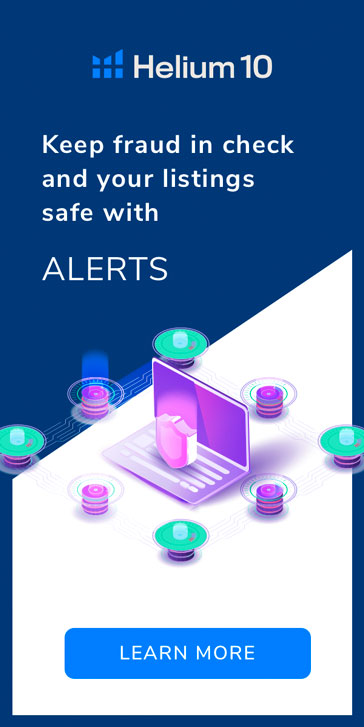In some ways, there’s never been a better time to establish a brand on the Amazon marketplace. Many small businesses have doubled or tripled their annual sales in the past year. Looking ahead to 2022, they could be looking to double up again. Sometimes success is quick.
However, with all that success comes more attention – and not all of the attention comes from buyers feverishly searching for your hot brand. Some eyeballs belong to black hat companies, be they competitors, agencies, or black hat third-party sellers, and they’re looking to boost revenue while knocking competitors out of the Amazon game.
What are Black Hat Sellers?
Black Hat sellers describe those who manipulate, undermine, and cheat the system to boost their own business or sink their competitors’.
As we troubleshoot ASIN and account suspensions for our clients, more and more often we’re seeing that the seller didn’t do anything wrong. In many cases, we find that another seller (or service provider) has abused Amazon’s tools in a concerted effort to take out their competition.
BUT, you can’t assume that anything negative happening on your account is an attack. That will blind you to real problems that need to be fixed with your branded products. And blaming others as the cause of your woes won’t get you anywhere. Seller Performance investigators will just think you’re making excuses and pointing fingers away from yourself.
So, when something awful happens under strange circumstances, you must be able to identify if it actually is an attack.
We’ve seen just about every kind of competitor attack imaginable in 2021, and we expect to see a lot more during the peak holiday period. You need to know how to defend yourself against black hat attacks.
- Be aware of current black hat attack tactics. This makes it a lot easier to identify them when they happen to you. Don’t be oblivious.
- Collect evidence and solid proof of suspicious activity on your listings. Simply telling Amazon that you think you’re being attacked won’t produce results. You must investigate and demonstrate to their satisfaction that it is, in fact, abuse.
- Report it using the evidence you’ve gathered and show Amazon that the issues are due to another seller. Then, appeal to them to resolve it.
- Escalate your appeal. If the Abuse team doesn’t take action, escalate it to someone higher up in the pecking order who will.
Know the Latest Black Hat Tactics
None of these are particularly new tactics, but these are the ones we’ve been seeing the most in 2021.
PDP (Product Detail Page) Abuse
The catalog team can’t communicate with Seller Performance, and in our experience, Seller Performance often doesn’t have an understanding of how the catalog works. Adding in Brand Registry, who are often the only team able to fix catalog issues (but often have no idea how to do that), PDP abuse can be one of the most complex issues to fix.
- Hijacking. Hijacking doesn’t mean an unauthorized seller on your detail page. It means someone changing your detail page to a different product, or adding incorrect information.
- Adding restricted information. Not sure why Amazon keeps flagging products as a pesticide or adult product? That could be an attack. First, make sure you aren’t making any pesticide or adult-themed claims on the detail page. Then take a look at the backend of the listing. If you see any claims that you didn’t add, an attacker has added that to take down your listing.
Fake IP Claims
The good news is that we have seen Amazon beginning to take action against sellers and services who are consistently submitting baseless IP claims. The bad news is that the burden is on you to prove that the complaint is fake. If Amazon ignores you, you may need to push them.
Once again, the first thing you need to do is make sure that the complaint is not legitimate. You may need to work with an IP attorney to assess. Don’t just Google any easy-to-find attorney, find one with IP expertise.
The easiest place to start your investigation is with the complainant. Are they really the rights owner or rights owner’s agent? If not, dispute it!
Fake Negative Reviews or Bogus Customer Complaints
Don’t automatically assume that any buyer complaint you receive is abuse. Instead, we recommend that you assume received complaints are real until proven otherwise.
How do you prove otherwise? Look for patterns in behavior along the following lines. Keep in mind that reporting abuse and expecting action on the other side is NOT about gathering together randomly assembled, scattered facts. Don’t think that you will simply throw a few pages of screenshots or summary at Amazon, hoping they’ll stitch the story together for you.
Operate under the assumption that it will be up to you alone to pre-package the information for Amazon’s abuse teams, no matter how obvious you believe the evidence to be.
Pretend you’re showing proof to a dubious or unseasoned jury member at a trial who starts skeptical, until convinced.
Are multiple reviewers using similar language? Do they make similar comments on reviews across a variety of your ASINs?
Look at the reviewers, themselves, and try to identify other reviews from the same reviewer saying the same thing. Are the reviewers themselves leaving similarly negative reviews for multiple sellers in your category except one?
These are all great starting points to flag and report. If Amazon accepts the validity of the pattern you’ve presented, they should ban the reviewers and delete all of their reviews as illegitimate.
How to Defend Yourself the Right Way? Report Early and Often
Especially in Q4, you need to be ready and have a plan to defend yourself if black hats target your listings for suspension. Keep in mind that attacks could come at any time, so here are our top 5 ways to prepare:
#1– Devise a Strategy
The hotter the product and the more popular the category you’re in, the more you need to watch your back. Study the behavior of competitors as much as possible, and scrutinize complaints as they come in to identify buyer complaint trends. If there are sudden bizarre complaints or unusual comments that sound like they’re fake, you may have a competitor buying from you in order to report your product as unsafe, “not as described” or inauthentic in some way or another.
Once you have a strategy, implement it! Don’t task one of your team with monitoring listing uploads and flat-file submissions, then fail to follow up on those API syncs to make sure your listing content is protected.
#2 — Prepare Written Abuse Report/Appeals Drafts for Most Common Attacks
Have written content minus the specific attack details ready to go into an “insert here” timeline.
Amazon began asking sellers to compose “Pre-POAs” (or proactive POAs as they are sometimes known) plans of action prior to account suspensions a couple of years ago. Why? They realized how poor, hastily written, disorganized appeals were, and how much time was wasted on both sides when Amazon had to reject the “panic” submissions received.
The same concept applies with an ASIN reinstatement appeal after you’ve been attacked, with your ASIN being taken down for no apparent reason.
You’re looking for immediate resolution, we get it. But your appeal and/or abuse report won’t be taken seriously if you’re copying and pasting random things found in the seller forums, popular Facebook groups, masterminds, or the like. Unless it’s custom, unique, and specific, Amazon teams will toss it in the nearest trash can.
#3 — Ask Amazon to Protect Your Listings, Starting Today!
Ask for entry into or at least a chance to apply for Brand Exclusivity (or what’s sometimes called “Brand Priority”) so that your ASIN will be protected from interlopers, catalog abusers, black hat services targeting your flat file uploads, and other means of taking a listing down.
Amazon’s not disclosing the exact nature of “Brand Exclusivity” programs but we know they exist. We also know numerous sellers have to start petitioning their SAMs (Strategic Account Managers) and Category managers for assistance with this.
If Abuse Prevention teams won’t allow you to protect your listings from future attacks by upping their game, what else will they offer you? Your ASINs won’t be whitelisted from another suspension. You need to push Amazon to help you prevent illicit changes from being made to your listings by outside parties. Brand Registry entirely failed in this regard, so as a successful growing brand in the marketplace, advocate for the lockout of ASIN contributions from anyone but you — the brand owner! Not too crazy, right?
#4 — Escalate an Abuse Report, or Prepare to be Ignored.
What do you do when there’s no action taken on your submissions to abuse teams?
The listing(s) remain down, and all you get is a copy-and-paste response or complete radio silence.
You escalate both your appeals for listing reinstatement, AND the abuse reports, that’s what!
#5 — Don’t Give up, and Don’t Let Amazon Off the Hook
Don’t ease up on Amazon if you see action on the reinstatement, but not the abuse report. You’re not finished yet.
If your attacker is savvy enough and if there’s enough money in it, they’ll continue taking you down. Whether it’s detail page or backend keyword abuse, fake reviews, fake buyer complaints around safety, expiration, IP violations, or anything else that could hurt your business. If it’s worth it to them, they’ll keep coming back.
There are no pre-defined tools within Seller Central that help you defend your listings, so you could be attacked upwards of 5-10 times in a row, albeit using different or alternating tactics, on a single listing. We’ve seen that happen dozens of times and don’t expect Q4 2021 to be any different. If Amazon ignores you, take it to a manager or VP-level Amazonian. Cite all facts and data surrounding your inability to communicate with the teams or direct reports below them.
Lay out exactly what happened, how their tools have been abused, leading to your top seller ASIN falling by the wayside. Show Amazon exactly how their processes have failed to resolve the issue
- How many times has it happened already? Give a hard count number.
- How much revenue have you lost, each time it happened?
- How long did it take them to review your appeals, let alone to resolve and reinstate? Is that length of time increasing or decreasing?
- How many stops have you made along the way, in terms of appeals to different teams, escalations to upper-level management, VP-level actions? Document those accordingly, adding attachments as needed.
- How much have you lost overall to abuse this year, versus last? Emphasize the fact that attacks are worsening, without improvement on the Amazon enforcement side of the equation
- Describe where ELSE you’ll appeal for brand protection and assistance if the situation continues unabated. Don’t be shy!
Remember, you’re the one responsible for protecting yourself right now. Amazon has made few tools available to you, and they can see inside your account — you cannot. Prepare, and be ready to counter abuse the right way.
Your holiday sales may very well depend upon it!
Original Post from https://www.helium10.com/blog/protect-amazon-listings-from-black-hats/





























